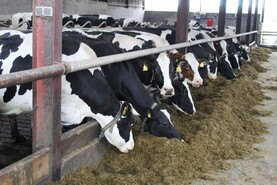Demand for butter has insulated prices in recent commodity auctions, as powders come under further pressure.
Most of the demand is coming from the US, the biggest buyer of EU butter. But demand is also coming from growing markets in Saudi Arabia and Asia.
In 2016, EU exports of butter grew by 20% to a record 162,285t with cheese exports increasing by 11% to 800,000t. This trend has continued into 2017.
Exports to the US grew by 10% for butter, totalling 19,265t with cheddar exports growing by 2%, totalling 142,220t. Cream prices have also increased on the back of stronger butter markets.
While butter and cheese are seeing demand improve prices, powders have plummeted. This has highlighted the fragility of the recent market recovery.
UK commodities
In the UK, butter and cream prices have also improved. Throughout March, butter prices have strengthened by 6% to £3,650/t.
On the back of butter prices, demand for cream has seen price increase from £1,600/t in early March to £1,800 this week.
UK skim prices are currently £1,550/t with Dutch prices just above intervention levels at €1,700. Exchange rates are softening the effect of the falling SMP price on UK milk prices.
In June 2016, SMP prices were at the intervention price but the stronger pound meant that SMP prices in the UK were the equivalent of £1,300 to £1,400.
With the flush of spring milk yet to come, there are concerns over further increases in SMP coming on to a depressed market. Calls are being repeated by various processors to remove the oversupply from the market with intervention.
Increased milk production
Market analysts in Britain have forecast that milk production in 2017 will most likely increase to 12.1bn litres, based on five-year trends. This would see annual production surpass 2016 levels of 11.9bn litres. According to ADHB, milk production trends in 2017 will see a peak to trough ratio of 1.13, whereby supplies in May are 13% higher than those in late autumn.
Meanwhile, EU forecasts indicate that milk production is also likely to increase, even with the total EU dairy herd to shrink by 1.6%, or 380,000 head.
The Netherlands will account for the majority of this herd reduction due to compliance regulations under the nitrates directive.
However, even with an EU herd reduction, yields are expected to rise by 2%, which will give a net increase in EU milk deliveries of 0.6%.
Estimates are that there will be little increase in production during the first quarter of 2017.






 This is a subscriber-only article
This is a subscriber-only article










SHARING OPTIONS: